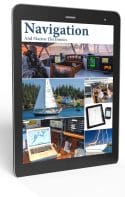Three Navigation Mistakes That Can Wreck You
2 CommentsReading Time: 3 minutes
More Articles From Online Book: Navigation and Marine Electronics:
- Knowing Where It’s At
- Electronic Chart Dangers
- Keeping Safe From Chart Inaccuracies
- A Useful, But Potentially Deadly, Feature of Navigation Apps and Plotters
- Chart Plotters And Autopilots, Never The Twain Should Meet
- Do You Still Need Paper Charts?
- Backup Systems
- 11 Tips for Safe Navigation With Phones and Tablets
- 12 Electronic Navigation Tips From a Cruise on Someone Else’s Boat
- Marine Electronics System Recommendations
- 6 Tips To Stop Marine Electronics From Ruining Your Cruise
- Marine Electronics Recommendations—Communications
- Marine Electronics Recommendations—Radar
- Which is Best For Navigation: Plotter, Computer or Tablet?
- Coastal Passages, Part 1—Making a Plan, 10 Tips
- Coastal Passages, Part 2—Rounding Headlands
- Coastal Passages, Part 3—Off We Go
- Costal Passages, Part 4—Keep On Plugging
- Coastal Passages, Part 5—On To The Finish
- Passage Anchorages
- Navigating in Fog—The Tools
- Navigation in Fog—Preparation
- Navigation in Fog—Underway
- Radar Collision Avoidance, Part 1—Plotting
- Radar Collision Avoidance, Part 2—Turning Plotting Into Action
- 8 Radar Use Tips


The August 2015 issue of Yachting Monthly (pages 14-20) has a good article by Tom Cunliffe, “How to Use Vector Charts Safely”. Worth reading!
The desirability of split-screen viewing depends partly on the size and quality of the monitor. We bought a top-line 22″ diagonalPC display when launching in 2004. It is rather outdated today, but is still larger than most yacht MFDs
We will probably replace with similar size better quality monitor soon.
We use split screen a lot. Agree wholeheartedly that weak targets show better on a plain black background (with a few speckles, as discussed above, of course)